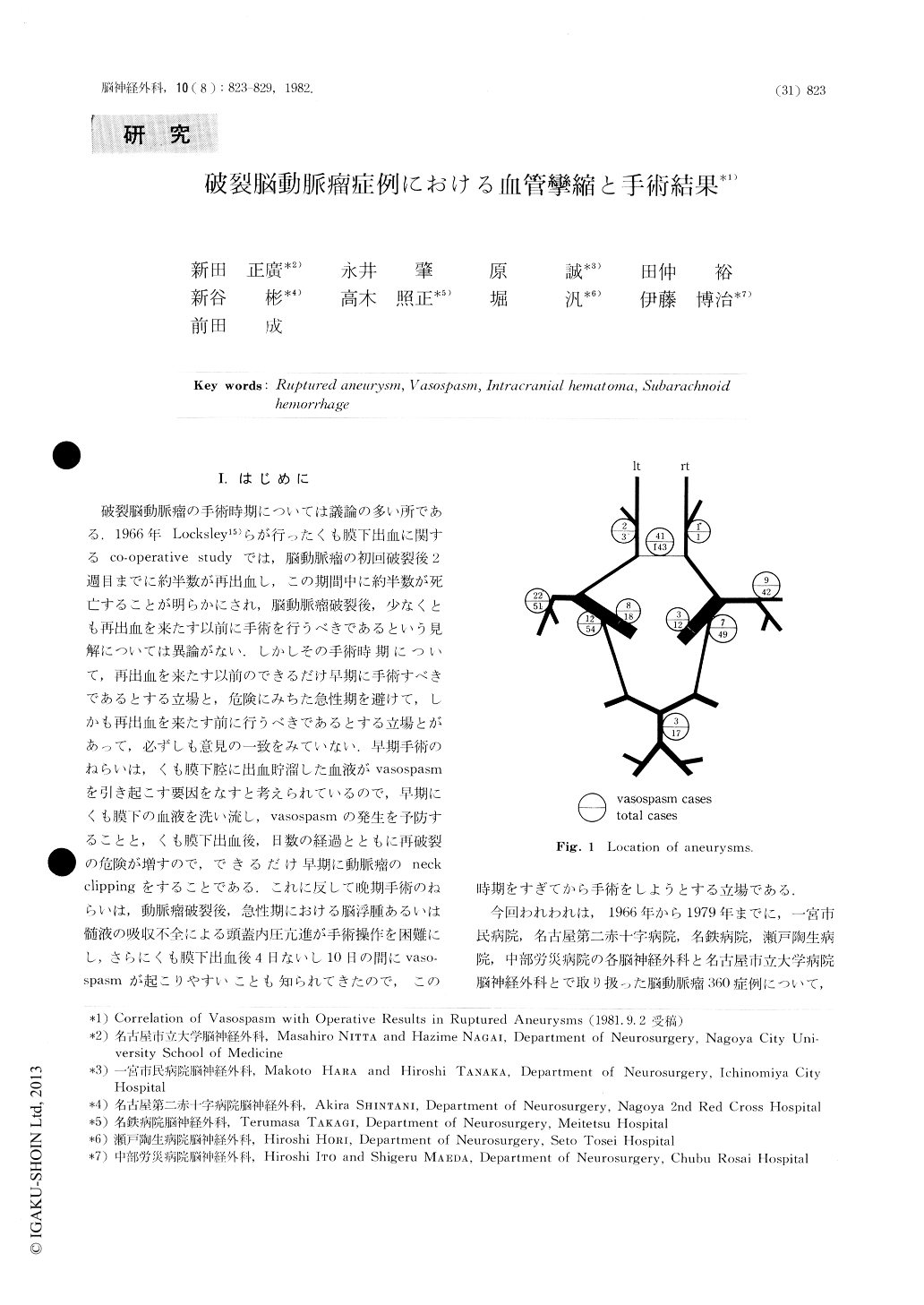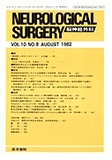Japanese
English
- 有料閲覧
- Abstract 文献概要
- 1ページ目 Look Inside
I.はじめに
破裂脳動脈瘤の手術時期については議論の多い所である.1966年Locksley15)らが行ったくも膜下出血に関するco-operative studyでは,脳動脈瘤の初回破裂後2週目までに約半数が再出血し,この期間中に約半数が死亡することが明らかにされ,脳動脈瘤破裂後,少なくとも再出血を来たす以前に手術を行うべきであるという見解については異論がない.しかしその手術時期について,再出血を来たす以前のできるだけ早期に手術すべきであるとする立場と,危険にみちた急性期を避けて,しかも再出血を来たす前に行うべきであるとする立場とがありて,必ずしも意見の一致をみていない.早期手術のねらいは,くも膜下腔に出血貯溜した血液がvasospasmを引き起こす要因をなすと考えられているので,早期にくも膜下の血液を洗い流し,vasospasmの発生を予防することと,くも膜下出血後,日数の経過とともに再破裂の危険が増すので,できるだけ早期に動脈瘤のneckclippingをすることである,これに反して晩期手術のねらいは,動脈瘤破裂後,急性期における脳浮腫あるいは髄液の吸収不全による頭蓋内圧亢進が手術操作を困難にし,さらにくも膜下出血後4日ないし10日の間にvaso-spasmが起こりやすいことも知られてきたので,この時期をすぎてから手術をしようとする立場である.
The present study is a retrospective clinicoradiologicalcorrelative investigation of subarachnoid hemorrhageassociated with ruptured aneurysms.
There were 360 patients in whom the source of sub-arachnoid hemorrhage was shown by angiography to be aruptured aneurysm, and 302 of them underwent surgery.
Arterial vasospasm was demonstrated in 113 of 360 patients(31%).When the time relationship between the subarachnoidhemorrhage and vasospasm was considered, vasospasmswere revealed in 35 patients (31%) to ten days after ahemorrhage.

Copyright © 1982, Igaku-Shoin Ltd. All rights reserved.


